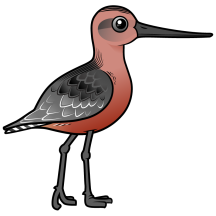Celebrating Avian Stamina: The Bar-tailed Godwit 'Endurance Champ' T-Shirt Design

This week, we shine the spotlight on a t-shirt design that celebrates not just a bird, but a global phenomenon of endurance and resilience. The Bar-tailed Godwit, known for its record-breaking long-distance migratory journey of over 7,000 miles without a single stop, is the star of our Read more »







































